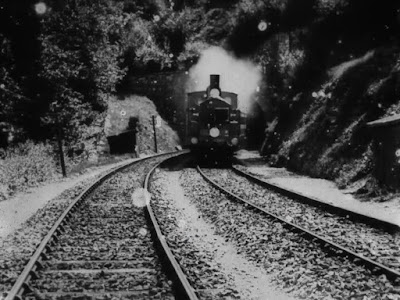Self-reflexivity and identity in Lupin (2021)
At the time of writing, I'm only three episodes into the new Netflix produced adaptation of Lupin (2021), but I have to admit, I'm quietly invested. While the show is frequently implausible, contrived and utterly unrealistic in its attempts to fold intricate twists and turns into the narrative – one-upping the ingenuity of the character and their efforts to manipulate events to facilitate a preferred outcome; "the sleight of hand", à la Christopher Nolan's movies, such as The Prestige (2006), or a film like Now You See Me (2013) by Louis Leterrier, who directed several episodes of the show in question – I think the series has more interesting elements surrounding the narrative that are worth looking at in further detail.
First, the meta role that the text plays on the formation of the character and their pursuit of truth and vengeance for a loved one cruelly wronged.
For the uninitiated, Lupin is based on a series of books about the character Arsène Lupin, the gentleman thief created by Maurice Leblanc in the early twentieth century. Lupin, as a character, featured in 17 novels and 39 novellas, beginning with the collection, Arsène Lupin, Gentleman Burglar (1907). In this version of the story, the character Assane Diop models his life on that of Lupin after being given a copy of the book as a childhood present by his father. The passing of the book from father to son triggers a significant plot-point, wherein the father, Babakar, is accused by his powerful and wealthy employees of stealing a priceless necklace, is imprisoned, and subsequently commits suicide in jail. Assane grows up, adopting the Lupin persona as his own, and sets out to prove his father's innocence.
The book throughout makes an appearance, offering clues to detectives trying to piece together the mystery, and also providing clues to Assane about the exploitation of his father. Sub-plots from the books are also updated and played out as inspirations for Assane's own plans, creating an interesting thread of self-reflexivity.
Lupin: Chapter One [Louis Leterrier, 2021]:
Lupin: Chapter Two [Louis Leterrier, 2021]:
In the very first episode, we're introduced to Assane working as part of a team of cleaners at the Louvre. Later, he'll visit a violent loan shark installed within one of the predominantly working-class high-rise developments on the outskirts of Paris, setting up the machinations of a robbery. Without establishing the character and the role he'll subsequently play, the introduction to Assane is meant to assuage conservative expectations and prejudices that unfortunately follow people from non-white, non-European backgrounds, before subverting them with later revelations of the plot. The audience accepts the reality of the character, as presented in these early scenes, because it plays into too many well-worn stereotypes frequently presented in films, music and television.
As the scenes unfold, we see that many of Assane's co-workers at the gallery are also from communities marginalized by the middle-classes. They come from African or Middle Eastern backgrounds. They work through the night, hidden away from the tourists and the patrons, invisible and unseen. The foregrounding of this scene and the way Lupin is able to go about setting up the particulars of his heist without drawing any suspicion or distrust, speaks to the way working class people – especially those from marginalized areas of society – exist in the background of things. To the middle and upper-classes, and those made comfortable by privilege, these people are merely there to fulfil a function or a need. They don't exist.
Lupin: Chapter One [Louis Leterrier, 2021]:
Lupin: Chapter Two [Louis Leterrier, 2021]:
When Lupin makes his escape from a rendezvous by using his cover as a delivery cyclist to evade the police, or infiltrates a prison by simply swapping places with a detainee with a similar physicality, it further calls out the lack of attention or concern such people and professions are afforded by those that fail to acknowledge their basic human existence. The show confronts audiences with their own prejudices and preconceptions, becoming in a way like a mirror, reflecting but also challenging the accepted cultural narrative that allows these same prejudices to exist.
In this variation of the story, Lupin's ability to be at once a member of high society and at the same time pass unnoticed through the working class, makes him something of an aspirational figure. A kind of folk hero, like Robin Hood. He might rob from the rich, but in doing so, he shows to the audience the inequalities and the poor living conditions that turn many of the characters existing on the margins of the show and its environments towards acts of criminality. In plainer terms, it also shows that a character like Assane can succeed; that he can play the system at its own game and win; that he can move seamlessly and comfortably through a world of wealth and privilege in a way rarely shown in mainstream entertainment.
There's a further self-reflexive quality to this relating to the nature of performance. Throughout, Assane as Lupin takes on different roles and guises. He's essaying characters essentially, putting on a costume and adopting a particular persona. Through the early episodes the filmmakers play with this, continually blurring the line between Assane as Lupin, Lupin as Assane, and the fear that one might be lost to the other. It will be interesting to see how these themes and ideas broaden and develop through the subsequent episodes.






































